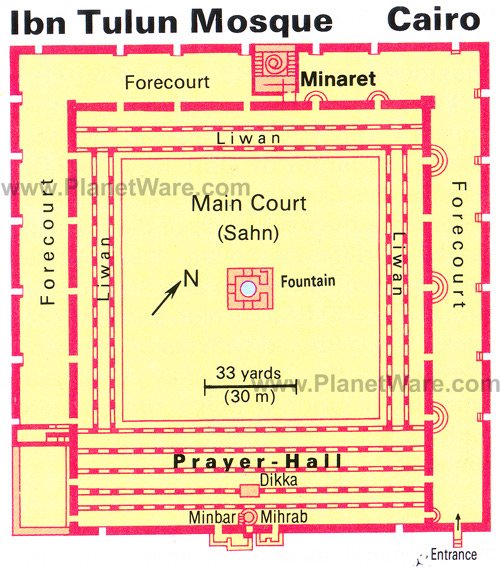
Ibn Tulun Mosque holds the record of the oldest and largest mosque in Cairo City with its original form intact. It is holds the title of 3rd largest mosque with overall area of 26, 318 square meters. This structure is a representative of the Islamic belief still preserved in Egypt today.
The mosque is constructed in a local hill named Gebel Yashkur (Hill of Thanksgiving) with local claims that Noah’s Ark rested here after the great flood instead of Mount Ararat mentioned in the Bible.
The architecture of the building is inspired by Samarran art usually connected with Abbassid production. Its original structure has an ablution fountain for washing between the inner and outer walls. It was destroyed by fire in 986 AD but restored by later management.
The mosque is enclosed with walls about 19 meters thick surmounted with unique crenellation. The top of the Tulun walls feature repetitive Abassid patterns. It has a minaret that serves as an original landmark of Cairo because of its unique structure made of brick.
Inside the mosque is the prayer hall with wooden roof with accents that were added during the Mamluk period. The whole place is full of Islamic influences with arcades that have Qur’an inscriptions running approximately 2 km. Adding to the Noah’s ark claim, the temple declare that the wall frieze planks were actual parts of the said vessel. The window grills in the place is filled with meticulous carvings of Stucco patterns.
The start of the building construction was in 876 AD under the commission of Ahmad ibn Tulun. The Islamic structure was finished in 879 AD over al-Qata’i (Tulunic Capital of Egypt) during Islamic Egypt under Abbasid dynasty. The glory of Tulunid reign in the place lasted only for about 26 years and somehow affected the once-warm affection on the façade.

Ibn Tulun Mosque

No comments:
Post a Comment
Feel free to place you thoughts here